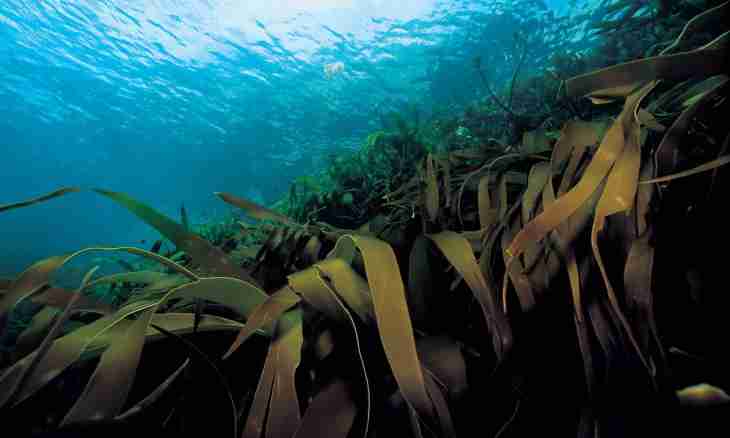The Bessosudisty sporous plants containing in the cages a chlorophyll and capable to photosynthesis are called seaweed. But in the scientific world this concept very vaguely.
Instruction
1. The name "algas" literally can be understood only as definition of the plants living in water. And nevertheless all plants which are not living in water are called seaweed. It is possible to give a reed-mace, lotuses, water lilies as examples exceptions. Even small plates of a duckweed are flowering or seed plants. They are called water plants, without applying the term "algas". The fact is that the concept "algas" is biological, but not systematic.
2. The main part of the national team of group of the organisms called seaweed enters the kingdom of plants and forms two subkingdoms there: bagryanka, or seaweed red, and real seaweed. Other organisms called seaweed are not considered as plants: for example, blue-green and prokhlorofitovy seaweed quite often separate in special group or carry to bacteria, evglenovy seaweed carry to the subkingdom of the simplest animals. Most likely, different groups of seaweed arose at different times and from different ancestors and gained the similar lines only as a result of evolution.
3. One of the most essential signs is the absence at seaweed of multicellular bodies, such as roots, leaves and stalks which are typical for the higher plants. The body of seaweed which is not dismembered on bodies carries the name of a sloyevishch, or tallom. In comparison with the higher plants the structure of seaweed simpler, they have no vascular or carrying-out system, and even the seaweed carried to plants are bessosudisty plants. Seaweed always disputes or vegetativno, never forming flowers or seeds breed. Seaweed can eat by means of photosynthesis thanks to the chlorophyll which is contained in their cages.
4. The diverse organisms belonging to seaweed belong as to a class of prokariot, doyaderny organisms, and to eukariota, truly nuclear organisms. The body of seaweed can be all 4 degrees of complexity which are known for organisms: there are seaweed with a colonial body, with multicellular and monocelled and even with the noncellular building. The sizes of seaweed also fluctuate in very wide limits: the smallest of the size of a bacterial cage, and the largest copies of sea brown seaweed in length reach 50 m. Division of seaweed into systematic groups happens also on biochemical features, such as set of pigments, structure of a cellular cover and type of spare substances.
5. Modern systematization cannot come to a consensus concerning classification of seaweed even at the highest level - taxonomical where divide into nadtsarstvo, subkingdoms, classes and departments.

